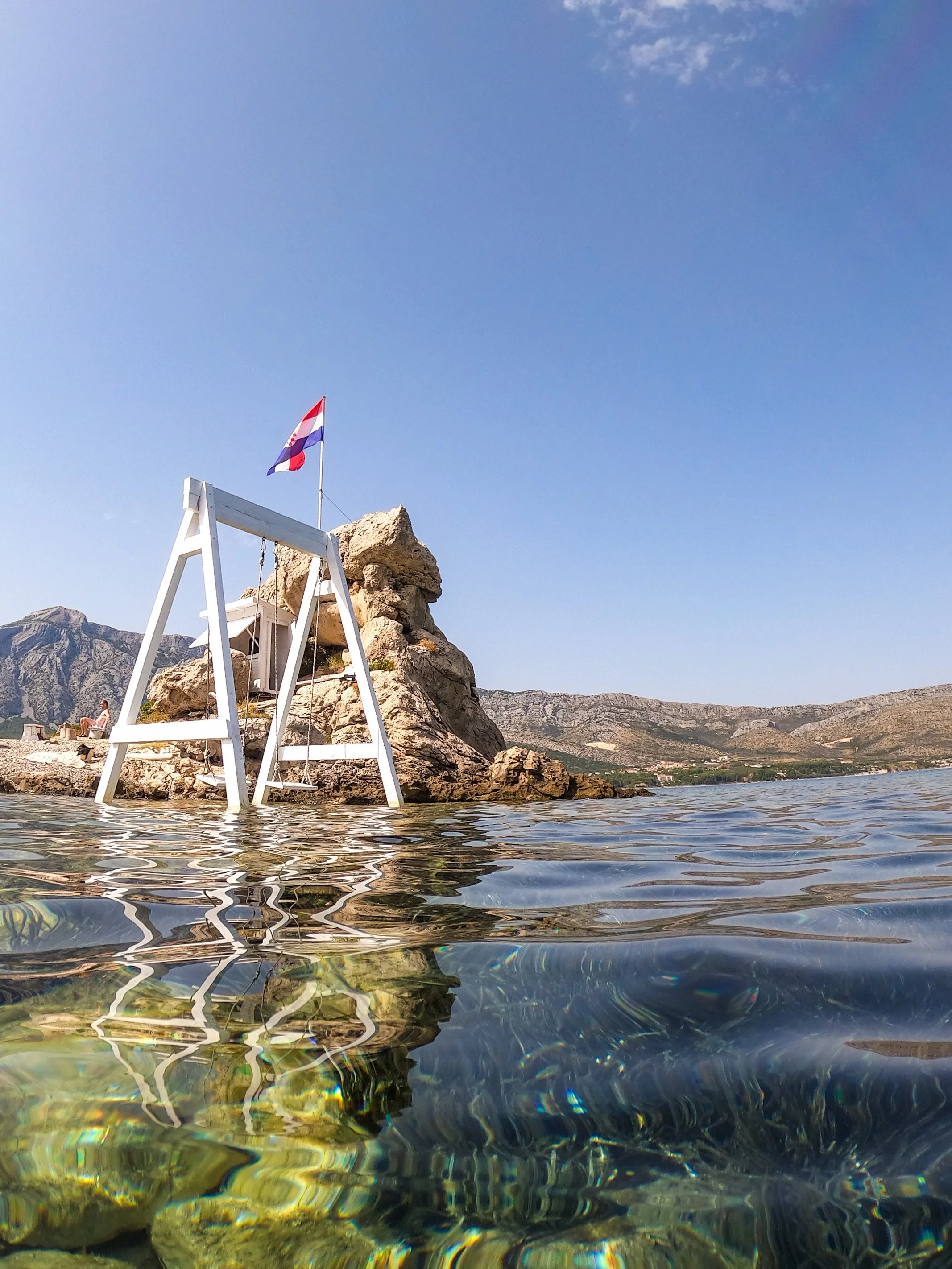Episode 46
Zlatni Rat Beach, Bol, Brač Island
@Timotej
Bok, prijatelji!
Welcome back to another fun and informative episode.
In today’s lesson we’ll learn words that will help you around the house.
Where does one sleep?
Where’s the food?
Where can I wash up?
Yes, we’ll learn those words today!
Lesson - House
house - kuća
home - doma
walls - zid/zidovi
roof - krov
floor - pod
door - vrata
window - prozori
room - soba/sobe
kitchen - kuhinja
restroom - zahod/WC
washroom - kupatilo
In this golden edition of the SSR, DJ Moe will give us a wonderful description of Zlatni Rat.
It’s a beach promontory on the island of Brač and one the top tourist destinations in all of
Europe. We’ve got our farmer’s tans ready!
Zlatni Rat.
Located on Otok Brač, and about 1 mile or 2 kilometers west from the harbor town of Bol. This beach juts out into the Sea to a point that often curls one way or another depending on the currents, winds and tide.
Zlatni Rat is what’s known as a promontory, a point of high land that is extended into a large body of water. Naturally occurring, usually promontories are made up of hard rocks that have resisted the erosive forces of nature or possibly made of the high ground that remains between 2 bodies of water.
Geomorphological Phenomenon, well geomorphology is the scientific study of the origin and evolution or topographic and bathymetric features created by physical, chemical or biological processes operating at or near the Earths surface. Another way to put it, its the study of a piece of earth on land or in the sea that has or is changing due to something directly impacting it.
In this case a beach is being affected by sea currents,
winds and the tides; which change the beaches shape over time.
And the word Phenomenon as we know is a colorful way of saying that this thing is known to happen and there are some questions about it.
Zlatni Rat is known by a few other names, the Golden Cape or the Golden Horn; as sometimes it takes the shape of curl at its point. The point extends southward into the Hvar channel which is home to strong currents.
The V shaped beach is approximately 2,080 ft long or 634 meters when you add up both sides, and is made up mostly of white pebbles. The size of the beach is only an approximation as we know now, it changes from time to time.
How long does it take to change?
Once every 2-3 years, changing its shape slightly and the direction it points. The Jugo plays a role in that, a strong wind that Blows in across the Adriatic from the south that i talked about back in Episode 23.
The waters in Zlatni Rad are cool and clear, from an aerial vantage point the water goes from dark blue to bright blue to crystal clear as your eyes make their way to shore; providing a picturesque contrast in color to the white pebble beach and the dark green pine trees as you make your way inward.
If you plan on swimming here, do be careful as it could be mildly hazardous due to the currents in the Hvar Channel, but only really if you plan to swim out from the most southern tip of the beach. There is a chance you could have a hard time swimming West back to the beach against the current. If this did happen, not to worry you will be carried East toward the harbor of BOL so you will know where you are. There are also lifeguards on duty that would help before that probably happened. And keep an eye on the little ones, as it gets deep very quickly.
Plenty to do, here, you can rent an umbrella and enjoy the beach, have a lunch, watch the sunset, rent a kayak, go snorkeling, etc...
Zlatni Rat is also a great place to enjoy the Maestral. The Maestral is westerly wind that has made the beach a wind surfer destination. So much so that in 2008, Red Bull organized the Red Bull Golden Jump here, a kite boarding competition in jumping/flying over the beach!
That’s it for the Super Slatko Report.






